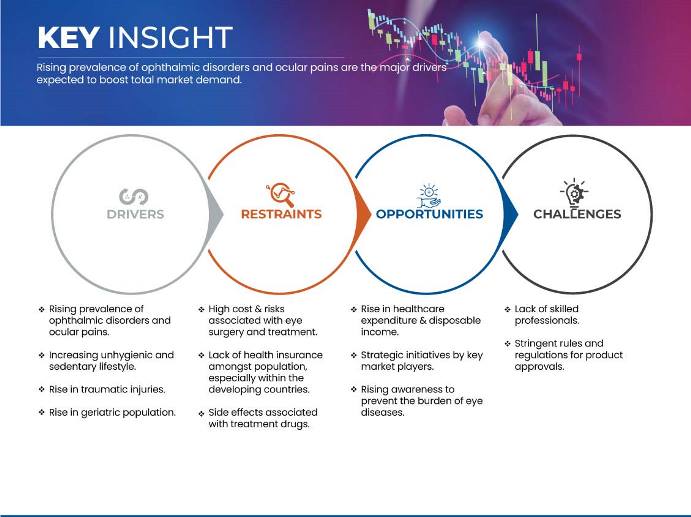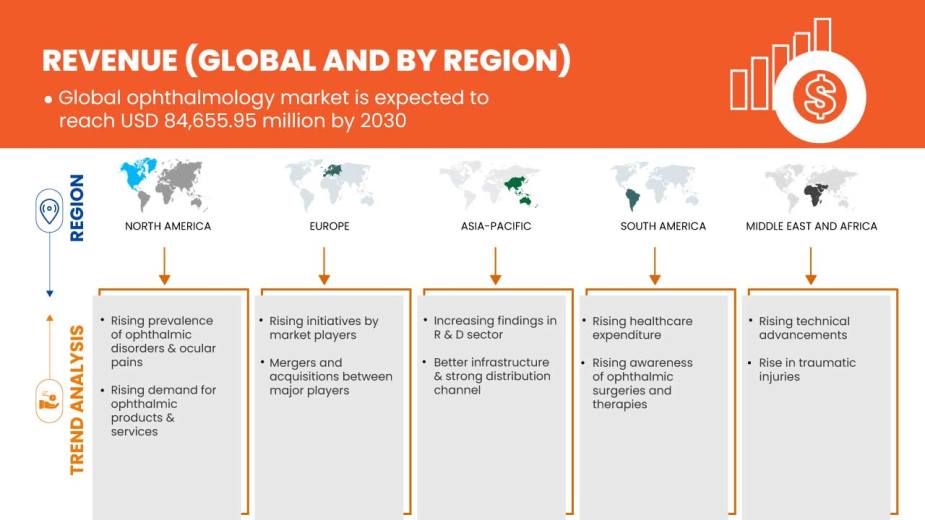Theme: Connecting Globally for Advancements in Vision
Euro-Ophthalmology 2023
- Welcome Message
- Sessions/Tracks
- Related Conferences & Societies
- Market Analysis Report
- Past Conference Report
On behalf of the 37th European Ophthalmology Congress which is scheduled to be held during July 31-August 01, 2023 at Vancouver, Canada, we are honored to invite you to join us from any part of the world, to Euro-Ophthalmology 2023. This unique conference showcases the latest developments in all fields of ophthalmology. Join us for an unforgettable personalized learning journey and discussions on the shared experiences and opinions of leading local and international experts. We invite you to participate in the Euro-Ophthalmology 2023 in Vancouver, Canada.
Join many of the ophthalmologists, optometrists, eye surgeons, eye care specialists, physicians, radiologists, medical imaging specialists, clinical researchers & scientists, professors, ophthalmology equipment companies, medical practitioners, diagnostic instruments in optometry and all the professionals from various multispecialty areas as they come together to share, partake research ideas, explore new collaborative, build career beginnings, establish meaningful connections, and witness the finest of the ophthalmology research community has to offer.
Why do attendees come to Ophthalmology Conferences year after year through their professions? There are so many reasons. Here are the top few:
- Get the latest updates in technology and management of ophthalmology.
- Direct interaction with our industry colleagues from around the world.
- Play a role in mentoring the afterward generation of physician-scientists and academic leaders.
- Bring home the latest up-to-dates on emerging technologies, clinical applications and practical solutions.
- Estimate which products will be best for your organization as lots of exhibitors showcase their products and services.
Track 01: Ophthalmology
Ophthalmology is that the specialty involved with the medical and surgical care of the eye. Ophthalmologists are experts in medical treatment, surgery and microsurgery for eye conditions and diseases in addition to diagnosing systemic disease that manifest in eye signs or symptoms. Ophthalmology has many subspecialties.
Track 02: Glaucoma: A Vision Loss
Glaucoma is a social event of related eye issue that reason mischief to the optic nerve that passes on information from the eye to the cerebrum. In its starting periods, glaucoma has no reactions, which is what makes it so dangerous when you see issues with your sight; the disease has progressed to the point that irreversible vision and might.
Track 03: Retina and Retinal Detachment
The retina is a slight layer of tissue within back mass of eye. It contains a large number of light delicate cells and other nerve cells that get and compose visual data. Retina sends this data to cerebrum through optic nerve, empowering to see. Retinal degenerative issue, for example, Age-related macular degeneration and near-sighted macular degeneration influencing youthful and old from numerous societies, races and ethnicities. The focal zone of the retina contains a thickness of shading delicate photoreceptor cells called cones which are in charge of shading vision and thus any deformity and modification in the focal territory of the retina will prompt color vision imperfections ailments like diabetic retinopathy and retinal tumors can likewise be in charge of the lasting vision misfortune in the event.
Track 04: Cornea Disorders and Treatments
Eye is composed of very sensitive and fragile tissues and every part of an eye serves its own function to maintain its normal vision. The cornea is the transparent front part of the eye that covers the iris, pupil, and anterior chamber. The Cornea, with the anterior chamber and lens, refracts light, with the cornea accounting for approximately two-thirds of the eye’s total optical power. But factors such as corneal ulceration, epithelial keratitis & drug-induced epithelial keratitis, corneal regeneration, recurrent corneal erosion and miscellaneous corneal disorders can affect the cornea and ultimately lead to the external eye disease that could end up with permanent blindness. Hence investigation of corneal disease is carryout to mitigate the disease and methods like Contact lenses & vision correction is also use to cure the vision related problems and surgical procedure like corneal transplantation is used to transplant the cornea.
Track 05: Ocular Oncology
As ocular oncology is a highly specialized field of ophthalmology, there is active international collaboration between ocular oncologists. Ocular oncology is a multidisciplinary service which includes general oncologists, pediatric oncologists, specialist nurses, clinical scientists and many others. The most common malignancies include uveal and conjunctivitis melanoma, uveal metastasis, intraocular and conjunctiva lymphoma and conjunctiva carcinoma. As well as the management of confirmed malignant tumors, ocular oncologists receive a large number of referrals of patients with suspected malignant tumors. Diagnosis is based on bio microscopy, ultrasonography, angiography, optical coherence tomography, auto fluorescence imaging and biopsy. The most common benign tumors include naive, chordal hemangioma. Many of these lesions require treatment and/or long-term surveillance. Eyelid and orbital tumors are more likely to be managed within oculoplastic or orbital specialist services.
Track 06: Pediatric Ophthalmology
Pediatric Ophthalmology refers to the diagnosis and treatment of eye disorders, especially in children. The scope for research in this field is high because the treatment modalities and protocols differ entirely from that of the elderly. The disease affecting the pediatric vision includes Genetic eye diseases, pediatric uveitis, developmental abnormalities and more. There are many genetic diseases that need at most concern during the early stage. Amblyopia is a disease which happens because of the reduced vision in an eye which hasn’t received adequate use during early childhood. The symptoms include tilting the head, poor depth perception and improper movements of the eye.
Track 07: Dry Eye & Low Vision
Dry eye is a condition wherein an individual needs more quality tears to grease up and support the eye. Tears are essential for keeping up the soundness of the front surface of the eye and for giving clear vision. Dry eye is a typical and frequently endless issue, especially in more established grown-ups. And low visual observation which intrudes the step by step working of a tyke or Low vision as the name exhibits the condition associated with surprising.
Track 08: Neuro-Ophthalmology
Neuro-Ophthalmology is the consolidation of neurology and ophthalmology, frequently managing complex systemic sicknesses that have signs in the visual framework. Cerebral Visual Impairment (CVI) incorporates every single visual brokenness created by harm to, or breaking down of, the retrochiasmatic visual pathways without harm to the foremost visual pathways or any significant visual ailment. Vision problems can be described as the decreased ability to view things. There are many varieties of eye problems and vision disturbances, myopia, halos, blurred vision etc. The impaired vision or vision problems will reduce the sharpness of images. It usually hampers the daily activities of a person.
Track 09: Ophthalmology Surgery
Ophthalmic surgery also known as ocular surgery is performed in the eye to treat a condition or a disease by an ophthalmologist. There are many types of ophthalmic surgery which includes corrective surgery-which is used to correct or treat a disorder. Phacoemulsification is a cataract surgery in which the internal lens in the eye is modified. Glaucoma surgery is done to decrease the production of intraocular fluid. Orbital surgery is especially considered with the eyelids or orbit and the lacrimal system.
Track 10: Diabetic Retinopathy
Diabetic retinopathy is a diabetes complexity that influences eyes. It’s caused by harm to the veins of the light-touchy tissue at the back of the eye (retina). At initially, diabetic retinopathy may cause no side effects or just gentle vision issues. In the end, it can cause visual deficiency.
Track 11: Diagnostic & Therapeutic Instruments used in Optometry and Ophthalmology
Diagnostic and therapeutic equipment help in diagnosing a disease and in treating it. Ophthalmic instruments are prototyped to prevent eye damage, injuries. A modern-day optometric practice use cutting-edge techniques, delivers the best quality service and provide customer satisfaction.
Track 12: Ophthalmic Genetics and Gene Therapy
Gene therapy is an exploratory technique that employs genes to treat or prevent diseases. In near future, this technique may include a doctor replacing the mutated gene with a healthy copy of the gene to the patient in order to cure the abnormalities instead of surgery or drugs. Ophthalmic genetics is a branch of ophthalmology which refers to the field where the genetic background of disease is researched. Liber Congenital Amaris (LCA) is a hereditary genetic disease that causes childhood blindness. Scientists and doctors have treated this disease with the help of gene therapy.
Track 13: Refractive Errors in Children
Refractive mistakes are only one potential reason for obscured vision, so it is critical for your kid to have an examination immediately in the event that they are encountering side effects.
The most well-known refractive mistakes in youngsters are:
- Myopia (otherwise called near-sightedness)
- Hyperopia (additionally called farsightedness)
- Astigmatism (contorted vision)
It is conceivable to have at least two kinds of refractive mistake in the meantime.
Near-sightedness: A near-sighted eye is longer than ordinary or has a cornea that is excessively steep, with the goal that the light beams center before the retina. Close protests look clear, however removed items seem obscured.
Hyperopia: A hyperopic eye is shorter than typical. Light from close protests can't center obviously around the retina. The words on a page will appear to be hazy, or it will be hard to see all around ok to do quit for the day, such as threading a needle.
Astigmatism: Astigmatism contorts or obscures vision for both close and far items. It's relatively similar to investigating a fun house reflects in which you show up excessively tall, too wide or too thin. A typical cornea is round and smooth, similar to a ball. It is conceivable to have astigmatism in blend with near-sightedness or hyperopia.
Track 14: Strabismus
Strabismus is a failure of the two eyes to maintain proper alignment and work together as a team. One eye turns inwards, upwards, downwards, or outwards, while the other one focuses at one spot. This typically happens as a result of the muscles that management the movement of the attention and therefore the protective folds, the extra ocular muscles, aren’t operating along.
Track 15: Uveitis
Uveitis could be a form of inflammation to the center layer of the attention (uvea), structure typically contains the iris, membrane and choroid coat. The causes of uveitis area unit of various varieties starting from a straightforward microorganism Infection to severe eye injury, studies show that the presence of inflammatory disease, AIDS, skin condition will increase the probabilities of uveitis. During this the inner a part of the attention turns to red in color, thanks to this pain, blurred vision and picture sensitivity happens. Prompt use of anti-bacterial will treat the condition otherwise their area unit high probabilities that it should cause eye disease, cataract etc...
Track 16: Optical Imaging and Sensing
Optical Imaging is the method in which light is being used to get the investigational imaging of the medical operations. Basically, optical imaging is of two types which are diffusive Imaging systems and ballistic imaging system. Some of the main examples are scanning laser ophthalmoscopy, optical coherence tomography, optical microscopy and endoscopy, spectroscopy.
Track 17: Optical Technologies and Laser Science in Ophthalmology
Light, like radio, consists of electromagnetic waves. The major difference between the two is that light waves are much shorter than radio waves. The use of electromagnetic waves for long-distance communications was the beginning of an industry known first as wireless and later as radio. This industry was the foundation for electronics, which brought the world so many fascinating technologies. The word LASER stands for Light Amplification by Stimulated Emission of Radiation. A laser is a device that emits a concentrated beam of photons, which are the basic units of electromagnetic radiation.
Track 18: Conjunctivitis
Conjunctivitis, or pink eye, is an irritation or inflammation of the conjunctiva, which covers the white part of the eyeball. It can be caused by allergies or a bacterial or viral infection. Conjunctivitis can be extremely contagious and is spread by contact with eye secretions from someone who is infected.
Symptoms include redness, itching and tearing of the eyes. It can also lead to discharge or crusting around the eyes. It's important to stop wearing contact lenses whilst affected by conjunctivitis. It often resolves on its own, but treatment can speed the recovery process. Allergic conjunctivitis can be treated with antihistamines. Bacterial conjunctivitis can be treated with antibiotic eye drops.
Related Conferences: Ophthalmology Conferences | Vision Conferences | Eye Conferences 2023 | Global Ophthalmology Meetings | Optometry Conferences | Glaucoma conferences | Ophthalmologists Conferences | Clinical Ophthalmology Conferences | Vision Science Conferences | Vision Congress
32nd International Conference on Insights in Ophthalmology May 02-03, 2023 London, UK; 8th Global Pediatric Ophthalmology Congress July 03-04, 2023 London, UK; 37th European Ophthalmology Congress July 31-August 01, 2023 Vancouver, Canada; 33rd International Congress on Vision Science and Eye September 18-19, 2023 Rome, Italy
Related Societies:
USA: American Society of Retina Specialists, Retinal American Academy of Ophthalmology, Optometric Retina Society, Pan America Glaucoma Society, American Glaucoma Society
Europe: European Society of retina Specialists, European Vitroretinal Society, European Glaucoma Society, European Society of cataract and refractive surgeons, European Mucosal Immunology Group
Asia Pacific: Japanese society of Cataract and refractive Surgeons, Asia Pacific Vitro retinal Societies, Asia Cornea Society, Afro-Asian Council of Ophthalmology , Asian Angle-Closure Glaucoma Club
Euro-Ophthalmology 2023 Market Analysis Report
Ophthalmology is a branch of medicine that deals with the anatomy, physiology, treatment and surgery of the visual pathways of the eye, including surrounding areas and the visual aspects of the brain. Ophthalmic devices are medical equipment designed for surgery, diagnosis, and vision correction. The devices gained increased importance and adoption due to the high prevalence of several ophthalmic diseases, such as glaucoma, cataract, and other vision-related issues. Ophthalmic drugs are medications that are specially designed and administered for the treatment of various eye-related disorders, including color blindness, diabetic macular edema, cytomegalovirus (CMV), and age-related macular degeneration (AMD).

Global Ophthalmology Market Scope: The global ophthalmology market is segmented into products, disease, prescription mode, drug type, route of administration, end user, and distribution channel. The growth amongst these segments will help you analyze meager growth segments in the industries and provide the users with a valuable market overview and market insights to make strategic decisions to identify core market applications.

Ophthalmology Market Regional Analysis: The global gaskets market is segmented on the basis of products, disease, prescription mode, drug type, route of administration, end user, and distribution channel.
The regions in the global gaskets market are Asia-Pacific, Europe, North America, Middle East & Africa, and South America. U.S., Canada, Mexico, Russia, Spain, Turkey, Germany, Italy, United Kingdom, France, Hungary, Austria, Switzerland, Netherlands, Poland, Ireland, Norway, Lithuania, Rest of Europe, China, Japan, South Korea, India, Australia, Singapore, Thailand, Malaysia, Indonesia, Philippines, Vietnam, Rest of Asia-Pacific, Brazil, Argentina, Peru, Rest of South America, South Africa, Saudi Arabia, UAE, Egypt, Israel, Kuwait, and Rest of the Middle East and Africa.

An increase in demand for ophthalmology products and an increase in research and development activities in the industry are also expected to drive the market in the forecasted period.
The country section of the report also provides individual market-impacting factors and changes in market regulation that impact the current and future trends of the market. Data point downstream and upstream value chain analysis, technical trends, porter's five forces analysis, and case studies are some of the pointers used to forecast the market scenario for individual countries. Also, the presence and availability of global brands and their challenges faced due to large or scarce competition from local and domestic brands, the impact of domestic tariffs, and trade routes are considered while providing forecast analysis of the country data.
The global ophthalmology market is expected to gain market growth in the forecast period of 2023 to 2030. Data Bridge Market Research analyses that the market is growing with a CAGR of 6.4% in the forecast period of 2023 to 2030 and is expected to reach USD 84,655.95 million by 2030, from USD 51,459.32 million in 2022.
36th European Ophthalmology Congress which is held in the leading global city London, UK attracting country's economic and cultural hub and one of main financial and industrial capitals.
Ophthalmologists, researchers, physicians, students and other healthcare professionals gathered from all over the world gathered to participate in the Euro-Ophthalmology 2022, Conference at London, UK. Our Conference covered the novel research in the field of Ophthalmology. Euro-Ophthalmology 2022 was organized by Conference series LLC Ltd.
The goal of Ophthalmology Conference is to provide a platform for the international relationships among the researchers involved in the field of Euro-Ophthalmology 2022. Euro-Ophthalmology Conference started with opening ceremony and followed by the Honourable guests, Keynote talk & plenary sessions by renowned speakers.
The list includes.
- Jerry Katzman, Emeritus New York Medical, USA
- Faruk Semiz, Eye Hospital Prishtina, Kosova
- Abdi Rhizlane, University Hospital Center Mohammed VI oujda, Morocco
- Mashael Al-Namaeh, TelaSight Inc Consultant, USA
- Maroa Alsawaaiya, The Royal College of Surgeons, Ireland
- Rosalyne Westley, Guys and St Thomas’s Hospital, UK
Our sincere thanks to the moderator, Chair & Co-Chairs for flawless execution of the conference program.
Conference Series LLC Ltd is proud to announce the upcoming conference "37th European Ophthalmology Congress" which is going to be held during July 31-August 01, 2023 at Vancouver, Canada.
Conference Highlights
- Ophthalmology
- Glaucoma: A Vision Loss
- Retina and Retinal Detachment
- Cornea Disorders and Treatments
- Ocular Oncology
- Pediatric Ophthalmology
- Dry Eye & Low Vision
- Neuro-Ophthalmology
- Ophthalmology Surgery
- Diabetic Retinopathy
- Diagnostic & Therapeutic Instruments used in Optometry and Ophthalmology
- Ophthalmic Genetics and Gene Therapy
- Refractive Errors in Children
- Strabismus
- Uveitis
- Optical Imaging and Sensing
- Optical Technologies and Laser Science in Ophthalmology
- Conjunctivitis
To share your views and research, please click here to register for the Conference.
To Collaborate Scientific Professionals around the World
| Conference Date | July 31-01, 2023 | ||
| Sponsors & Exhibitors |
|
||
| Speaker Opportunity Closed | Day 1 | Day 2 | |
| Poster Opportunity Closed | Click Here to View | ||
Useful Links
Special Issues
All accepted abstracts will be published in respective Our International Journals.
- Journal of Clinical & Experimental Ophthalmology
- International Journal of Ophthalmic Pathology
- Optometry : Open Access
Abstracts will be provided with Digital Object Identifier by










